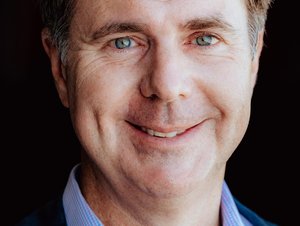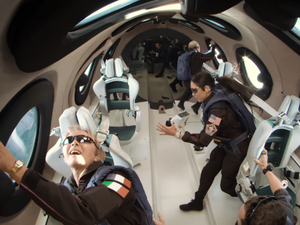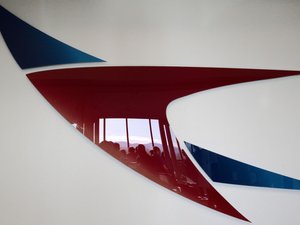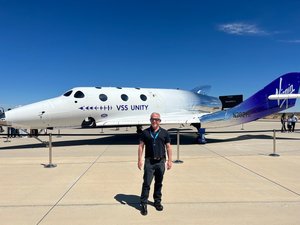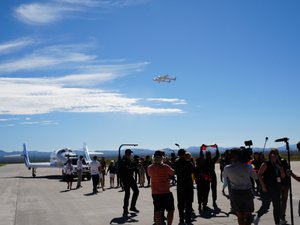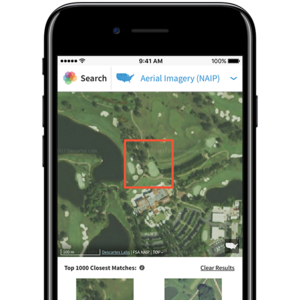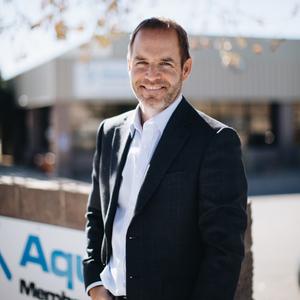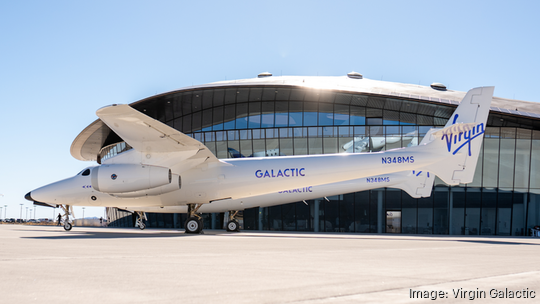
Just over two weeks after founder Sir Richard Branson said he doesn't plan to invest more money in Virgin Galactic, the space tourism company on Tuesday announced the launch window for its next commercial spaceflight.
The flight, planned for Jan. 26, would be Virgin Galactic's sixth commercial mission after kicking off its commercial service in June. While that inaugural commercial flight was a research mission, January's will be a private astronaut mission with four paying crewmembers on board.
And, if all goes to plan, it'll be the first time Virgin Galactic flies a private astronaut mission with all four seats on board its spaceship, VSS Unity, occupied by paying customers. Previously, an in-house astronaut instructor flew alongside a crew of three private astronauts.
Opening up that extra seat will bring in a bit of extra revenue for Virgin Galactic — specifically, $450,000, which is the per-seat price for private astronauts. Research missions carry a slightly higher per-seat price of $600,000.
That means, with all seats full of private astronaut customers, Virgin Galactic generates $1.8 million in revenue per flight with VSS Unity.
But Virgin, in early November, made a few big moves to phase out its Unity class of spaceships and accelerate the development of its next-generation Delta class of ships. The company laid off about 18% of its total workforce, including 73 positions in New Mexico, as part of a "strategic realignment," CEO Michael Colglazier said in a company-wide email on Nov. 7.
The realignment is aimed at getting the Delta-class spaceships ready for revenue service, which Virgin Galactic expects to start in 2026. The company, during its Q3 earnings call on Nov. 8, said those next-generation ships could generate $2.7 million to $3.6 million per flight, depending on if it's a private astronaut or research mission.
And, Virgin Galactic anticipates flying the Delta ships up to eight times per month, it said on the earnings call, meaning the company could pull in upwards of $20 million in flight revenue per month, per Delta-class spaceship. Virgin said it plans to run initial flight tests of its Delta ships out of New Mexico's Spaceport America in mid-2025, in preparation for the launch of revenue service.
Doug Ahrens, Virgin Galactic's chief financial officer, also said on the call the $1.1 billion in cash, cash equivalents and marketable securities it reported having on hand during the earnings report is "sufficient" to reach positive cash flow with the Delta-class spaceships.
Just under one month after the Nov. 8 earnings call, the Financial Times reported that Branson, who founded Virgin Galactic in 2004, "ruled out" investing more money in Virgin. Branson, in the FT report, reiterated Ahrens' assertion that the nearly $1 billion the company has on hand should be sufficient "to do its job on its own."
Virgin Galactic's stock price (NYSE: SPCE) dropped on the news of Branson's investment plans but has since rebounded, climbing by about 35% over the past two weeks. It closed Tuesday at $2.64, per MarketWatch.
